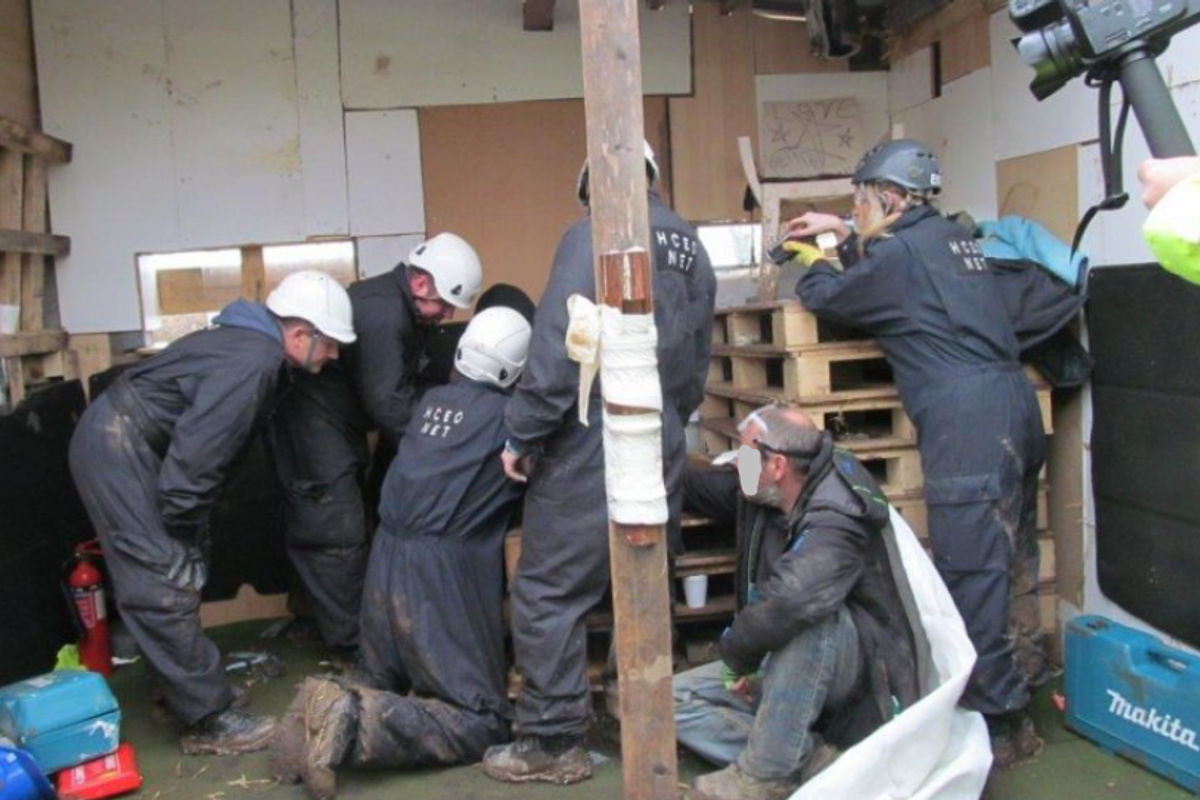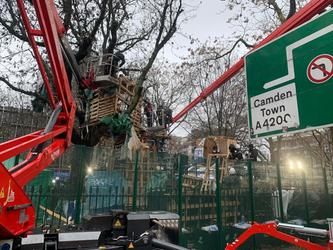Lock-ons, concrete, barbed wire and booby traps

Lock-ons are a favourite device used by protestors to make the removal process more challenging for the enforcement agents removing them from the site.
In this article, we will look at some of the strange and often dangerous lock-ons we encounter at ground level – lookout for our article on lock-ons at height and underground.
Dale Farm
National Eviction Team was involved in the very large project to remove travellers from the illegal section of the Dale Farm site.
One of the many lock-ons stands that out is where a six inch diameter “T” bar metal pipe had been attached to the chassis of an old corroding van and three female activists had locked on by each placing one arm into the pipe.
Then a structure of old brickwork was built around the pipework to make removal even more difficult. Compounding the situation was the van itself, which we assessed as being unsafe, so it would have to be lifted by a crane to stop it from collapsing on the travellers or the agents attempting to remove them.
When we removed the brickwork that they had put around pipe, we found tyres filled with concrete, barbed wire and nylon cord. Our enforcement agents had to gradually peel away the layers to get to the pipe.
The back end of the van then had to be safely lifted by crane and secured so that we could remove the three protestors in unison from under the van, while still attached to the pipe – all without causing any injury.
Once we had done that, we were able to grind the pipe away to release the protestors.
Also at Dale Farm, we had a protester who had put their arm into the car and through to the engine area, which meant that we had to cut away the car to be able to release the person.
Concrete, barbed wire and booby traps
Demonstrators will try to make it as difficult as possible for the enforcement agent to free them from the lock-on. Concrete, barbed wire and tyres are commonly added to backfill items such as barrels and beer casks.
There are often booby traps as well, such as pressurised aerosol cans put in the concrete to explode when the enforcement agent tries to remove them. Snare wire has been wrapped around the wrist, human faeces and razor blades are also common.
In one concrete example, we were faced with two young men lying on a caravan floor, each with their arm extended underneath the caravan with their arms fixed into a slab concrete underneath it. We had to (very carefully) chip away at the concrete to safely remove them.
In another example, there were three people locked onto a 50-gallon oil drum using a three-way pipe. They had put concrete, rubber tyres and cut up tin cans into the drum to make it harder to get them out.
Whilst not putting the enforcement agents in harm’s way, some protestors do highly risky things such as putting bicycle D-locks or chains around their necks for locking on to structures, particularly dangerous if they are at height.
At the National Eviction Team, we have probably seen all the different ways protestors risk their safety, and sometimes their life, during a demonstration or protest. Fortunately, by having the right skills and equipment, we are always successful in safely releasing and removing all locked-on protestors.



